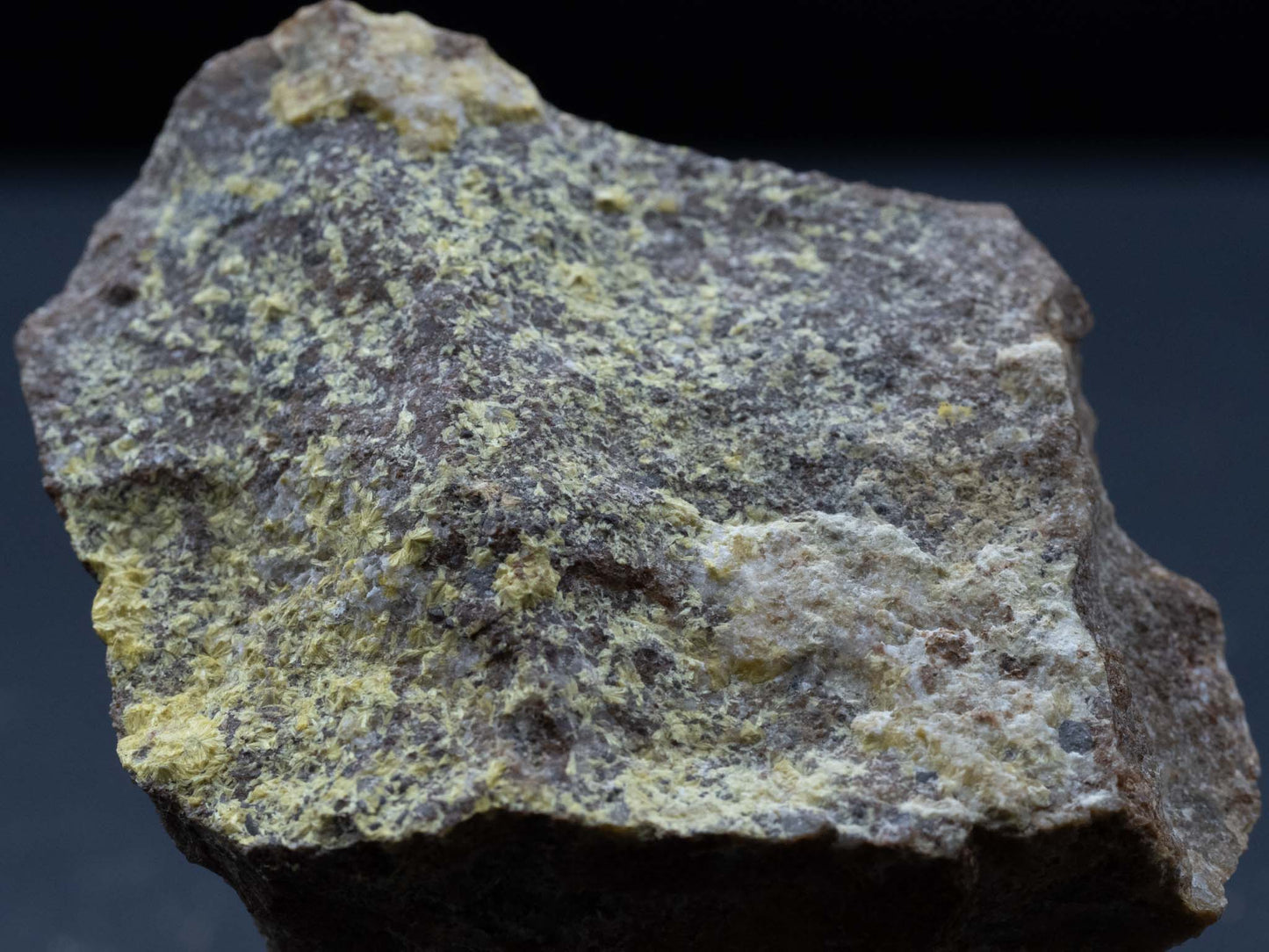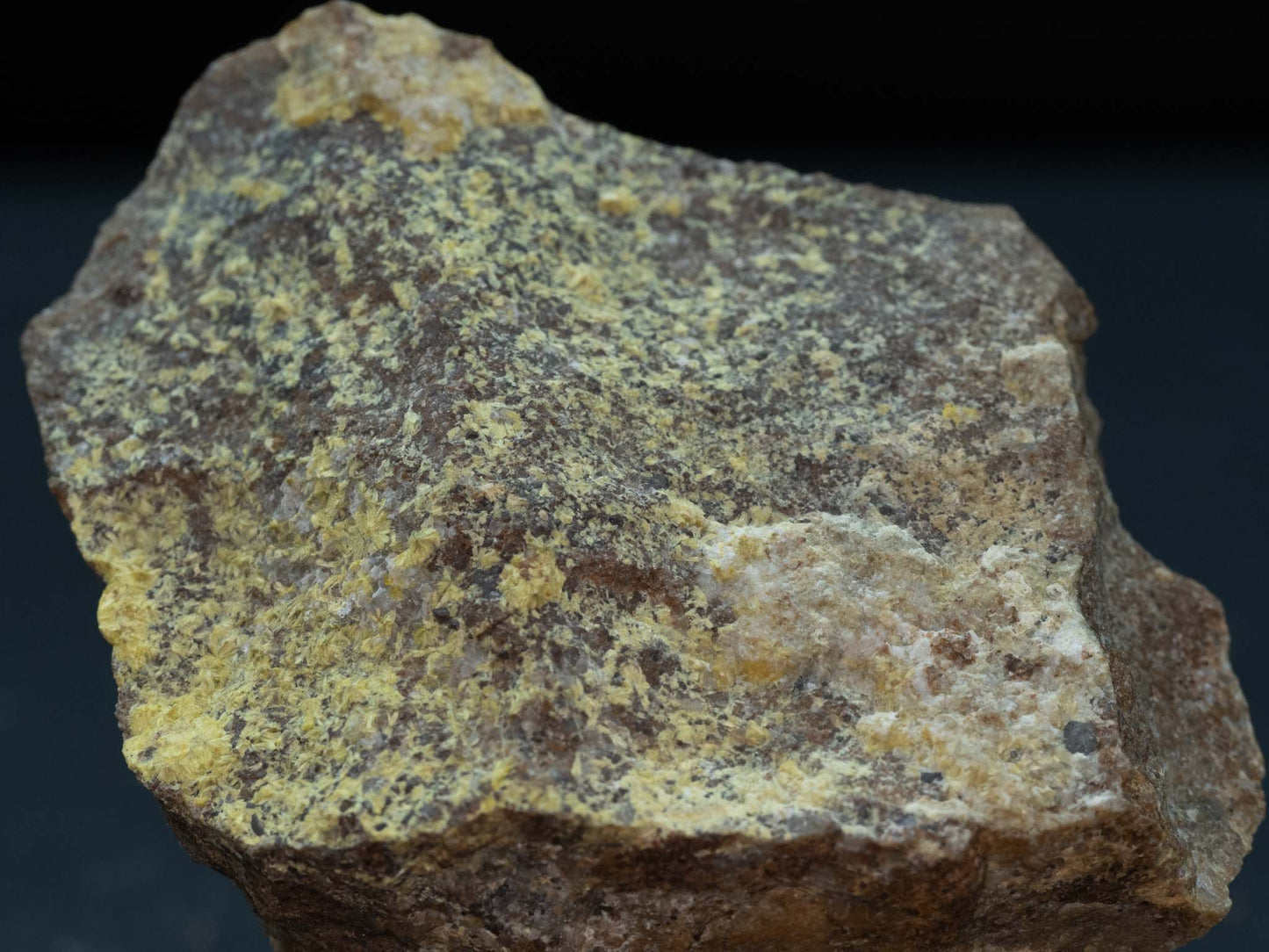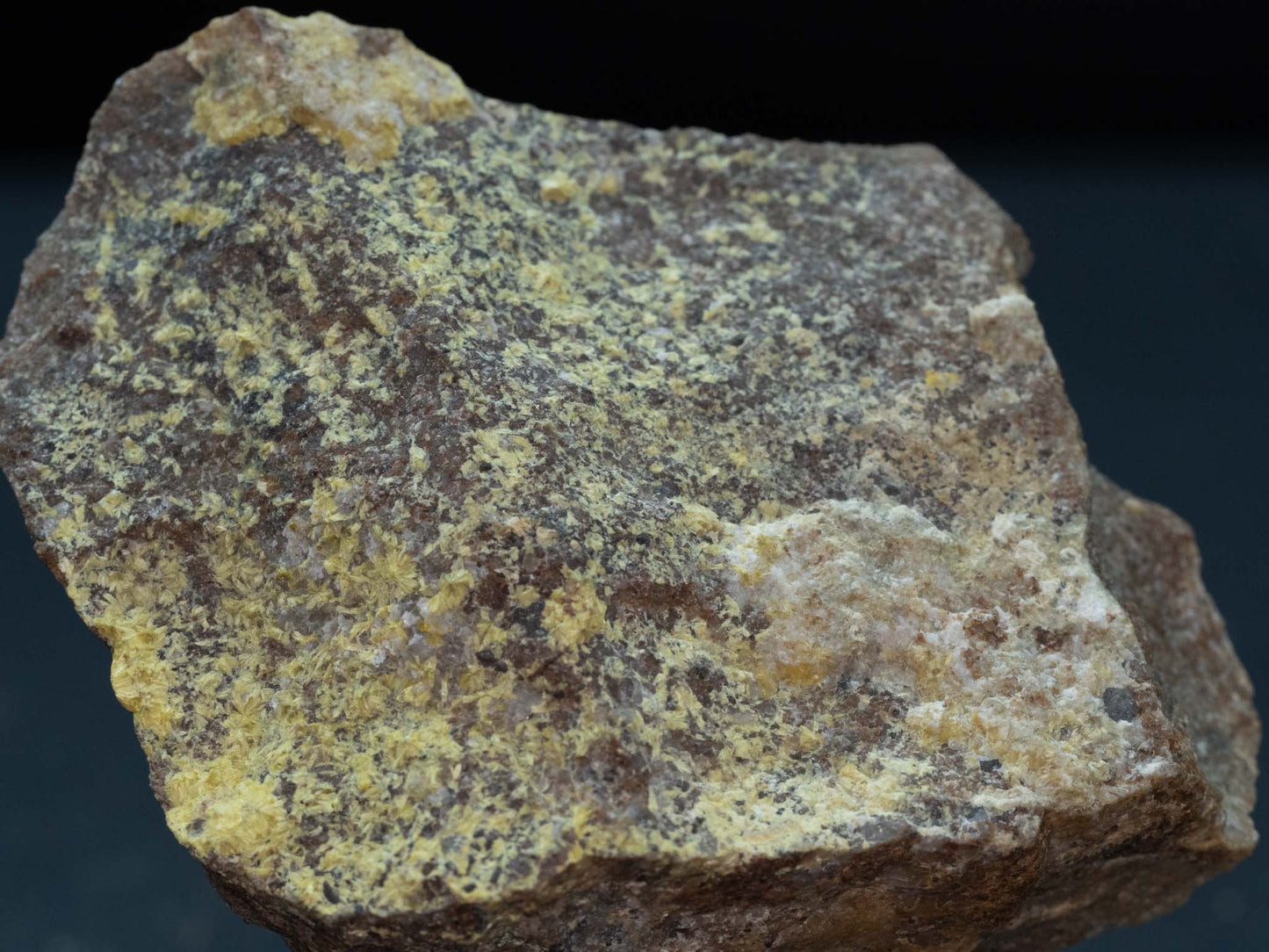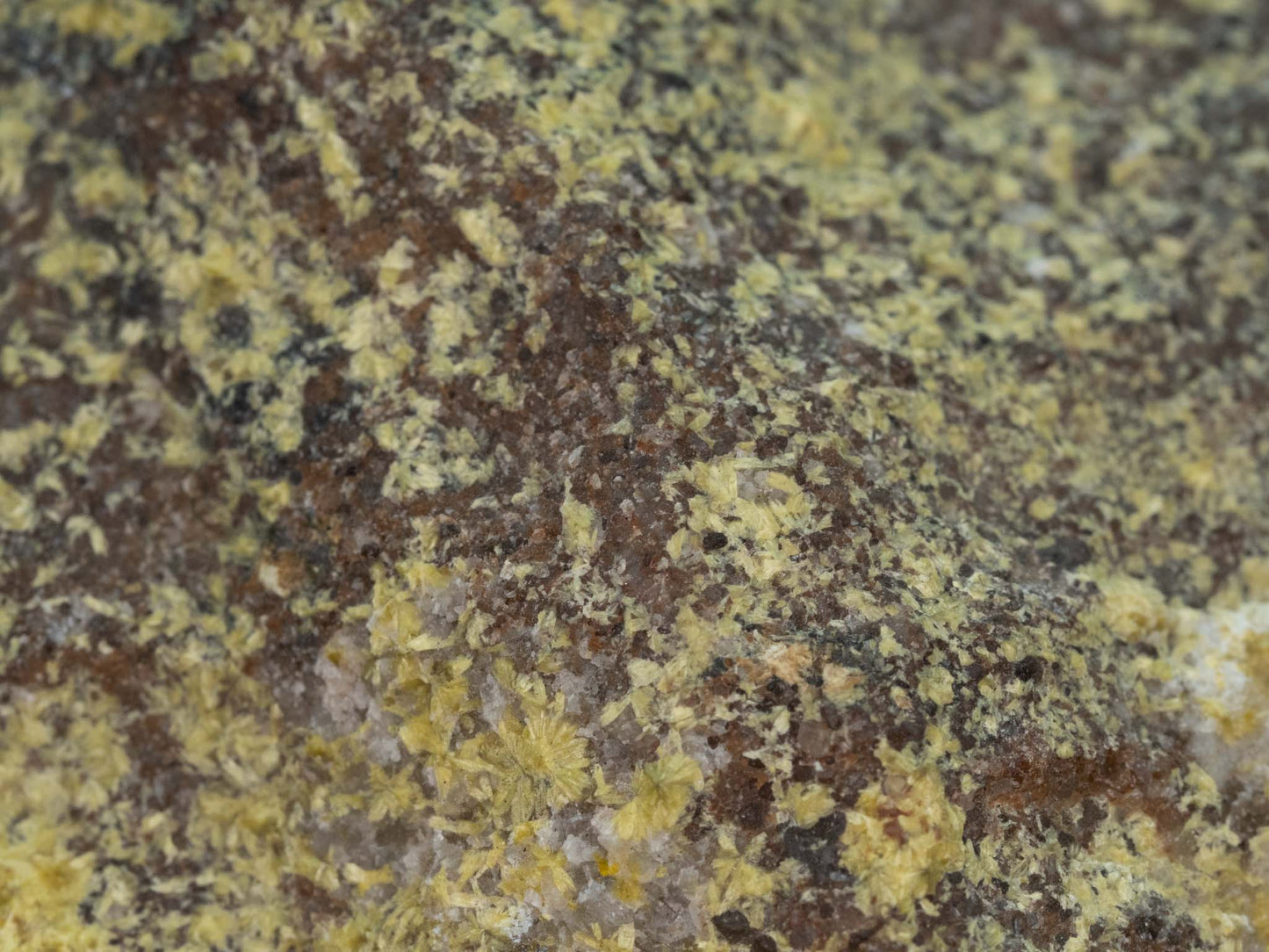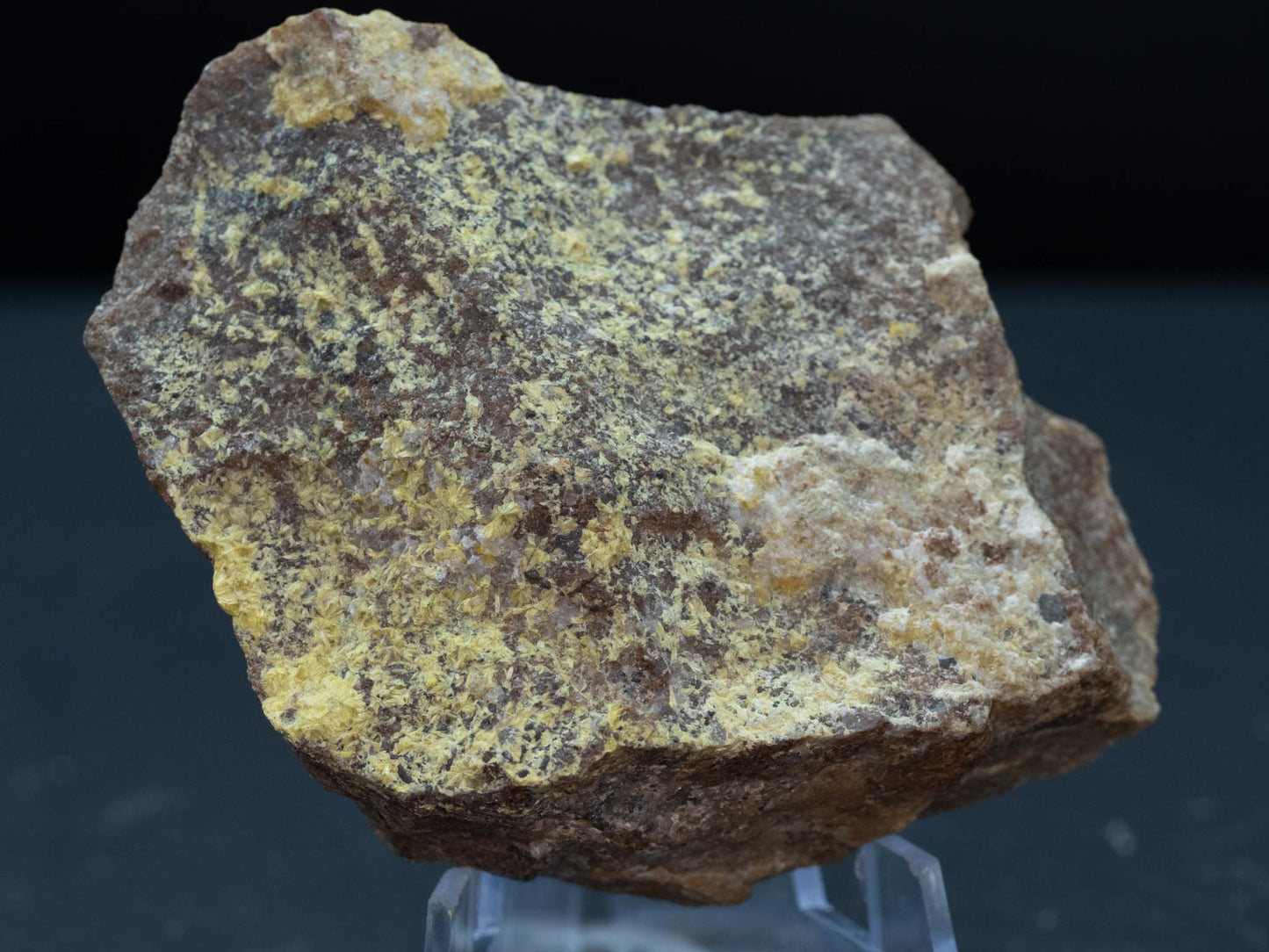Rad Man Minerals
Uranophane (Lambertite) - Lusk, Wyoming, USA
Uranophane (Lambertite) - Lusk, Wyoming, USA
Couldn't load pickup availability
 Ca(UO2)2(SiO3OH)2 · 5H2O
Ca(UO2)2(SiO3OH)2 · 5H2O
Uranophane, also known as Lambertite, is a notable mineral, particularly for its uranium content and its striking yellow to greenish-yellow coloration. Here is an overview of Uranophane, specifically as it pertains to its occurrence in Lusk, Wyoming, USA:
General Information
- Chemical Formula:
- Mineral Class: Silicate (Phyllosilicate)
- Crystal System: Monoclinic
- Color: Bright yellow, greenish-yellow
- Luster: Vitreous to silky
- Transparency: Transparent to translucent
Occurrence in Lusk, Wyoming
- Location: Lusk, Wyoming, has been a historically significant area for uranium mining in the United States, particularly during the mid-20th century.
- Geology: Uranophane is typically found in oxidized zones of uranium-rich deposits. In Lusk, these deposits are associated with sedimentary rocks, including sandstone and conglomerates.
- Formation: Uranophane forms through the alteration of uranium-bearing minerals such as uraninite in the presence of silica and calcium.
Properties
- Radioactivity: Uranophane is radioactive due to its uranium content, requiring careful handling and storage.
- Habit: Often occurs as fibrous or needle-like aggregates, crusts, or coatings on other minerals.
- Associated Minerals: Often found with autunite, torbernite, uraninite, and other secondary uranium minerals.
Significance
- Scientific: Uranophane is studied for its role in uranium ore formation and the geochemical processes involved in uranium mobility and deposition.
- Economic: As a secondary uranium mineral, it has limited but historical significance in uranium extraction and mining.
- Collector's Value: Its vibrant color and fibrous texture make it a desirable specimen for mineral collectors.
.
Approx. specimen size: 65mm x 50mm x 20mm
Approx. specimen activity on an SE International Ranger EXP: 37 000 cpm
